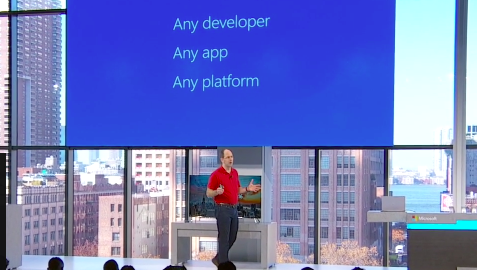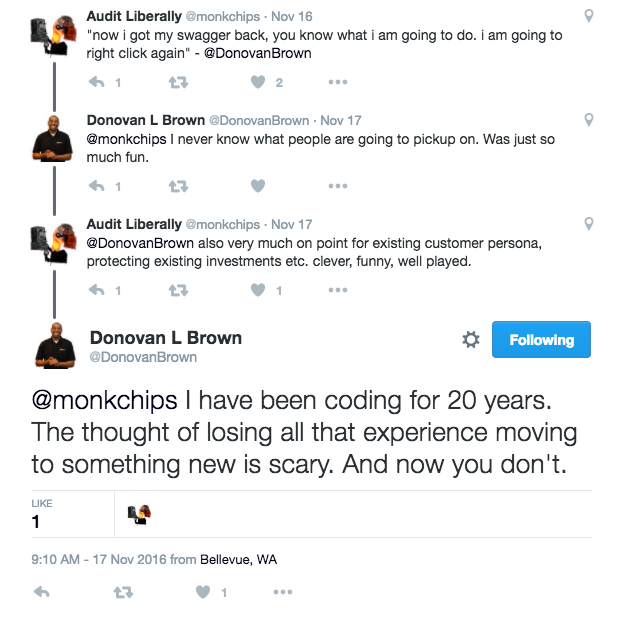At Microsoft Connect 2016 the subtexts for particular personae was as interesting as the news itself. It was fascinating to watch how the announcements were delivered. Microsoft gave some solid live demos, and between what was said and how it was said we can extrapolate details about how Microsoft views the developer population.
Part of this was as straightforward as noting the comments that were made on stage. The event was explicitly targeted at developers, and Scott Guthrie demonstrated this with laudatory statements in his keynote like “developers are critical for organizations to succeed in this new world” and “the impact that a developer can have has never been greater than it is today” and “there’s never been a better time to be a software developer.”
The team clearly intended for their expanded Visual Studio product offerings to help reach an expanded developer audience. If there was any doubt about the target population, Guthrie again dispelled it with explicit commentary. While the event obviously attracted existing Microsoft users, Guthrie claimed that “a lot of the developers watching [the event live stream] have never used any Microsoft dev tools or technologies ever before in their life.”
Most the demos in the keynote session reflected this view of a mixed developer audience. Chris Dias’ Visual Studio Code demo, for example, involved building a Node.js app from scratch against on MongoDB database developed on a Mac deployed to Linux-based backend. (Guthrie introduced it as “a little non-traditional for a Microsoft developer conference.”) From GitHub to npm to APIs, the tooling and messaging of this demo was clearly intended to demonstrate that Microsoft understood developer priorities and is ready to integrate into existing tool chains.
Donovan Brown’s fantastic demo about the new Visual Studio-Azure-Docker integrations provided yet another view of how Microsoft segments the developer population. Brown’s presentation starts at the 1:10:00 mark and is absolutely worth watching if only to watch how he sells in his demo. It’s fantastic.
One of the first rules of sales is to understand what your product is; you’re not selling a drill, you’re selling holes in a wall. Brown captured this truism better than any other demo I’ve watched to date. He demoed Visual Studio, but that’s not what he sold. He sold peace of mind; he sold the reassurance that you and your team’s existing skills are still relevant; he sold accessibility to the technology trend du jour; he sold confidence.
It was Brown’s charisma that initially caught my attention, but the more I thought about it the more I realized that this demo targeted a slightly different demographic than the others. This demo wasn’t from the command line. It was a gentle easing into the world of Docker containers through right clicking and context menus.
Microsoft did a good job at Connect using their demos to speak to various audiences. It’s hard to sell both new technology and business/skill continuity simultaneously. Dias’ demo appealed to developers that feel comfortable using the command line to build an app from the ground up while Brown’s demo reached a persona that relies on menus and built-in integrations. Furthermore, the company used the event to appeal to a spectrum of developers who had never used Microsoft products to the IT Pros and devs that rely on the familiar Microsoft UI.
Disclosure: Microsoft is a RedMonk customer, and they comped my conference ticket and T&E for the event.


No Comments